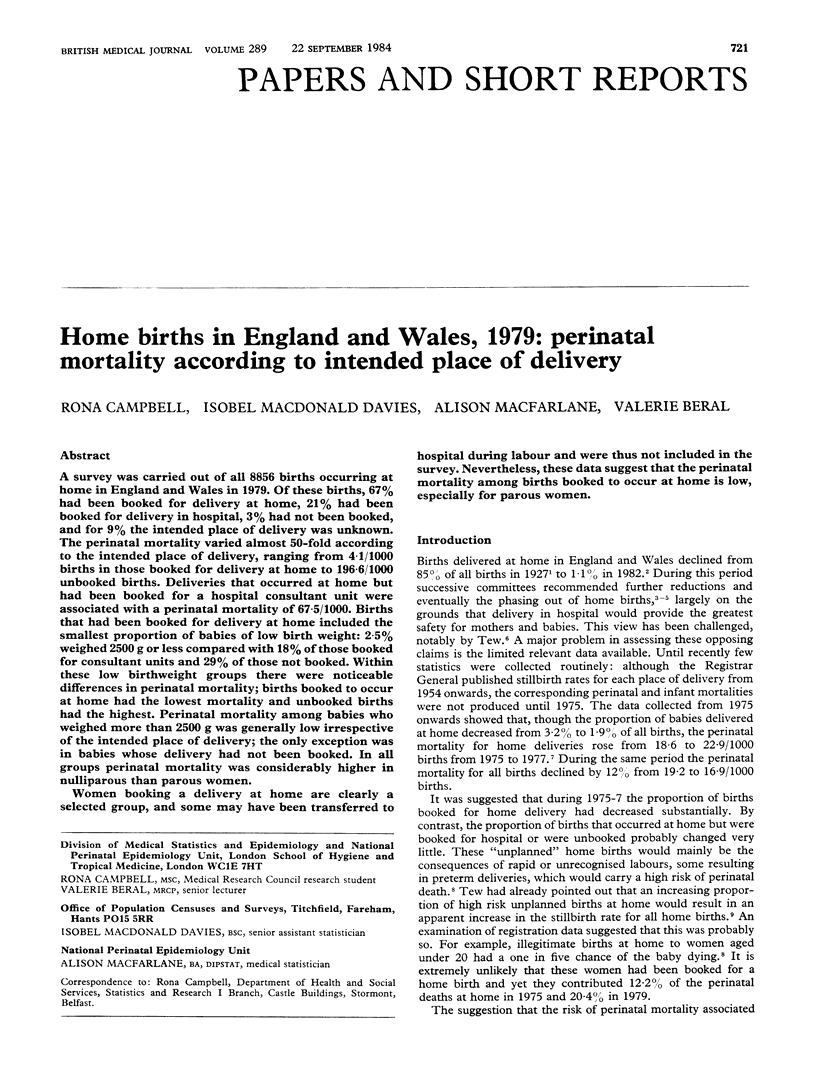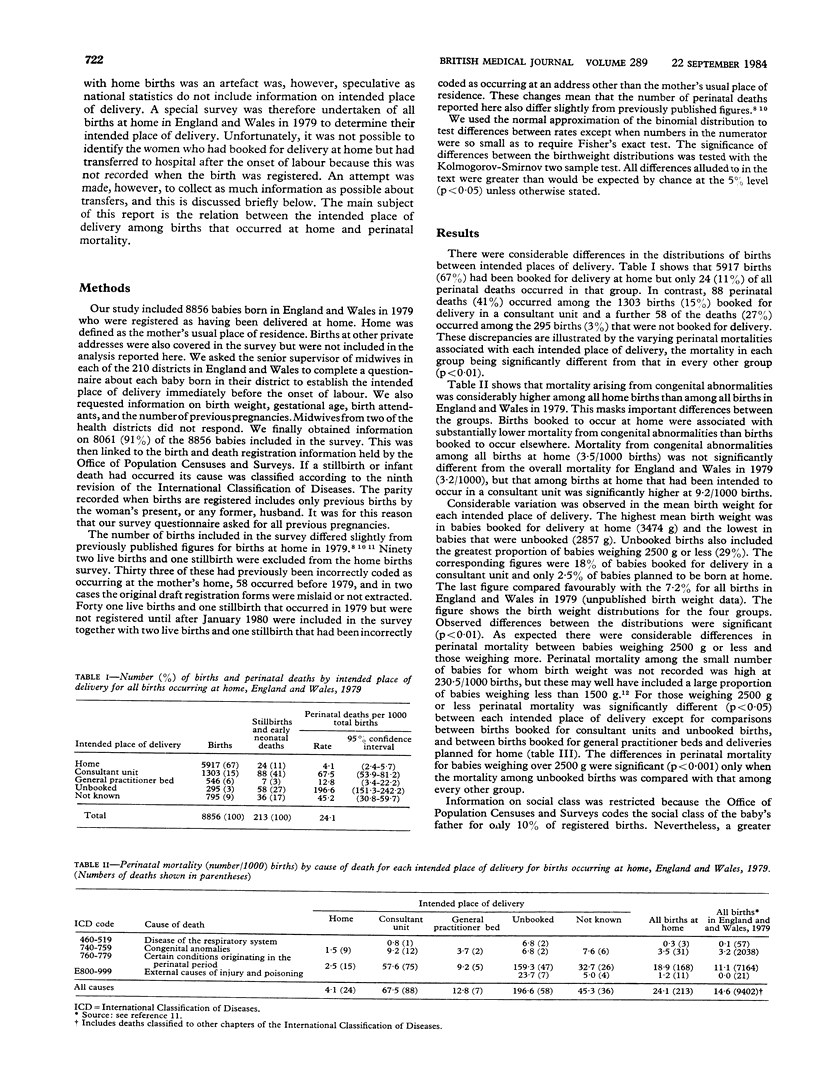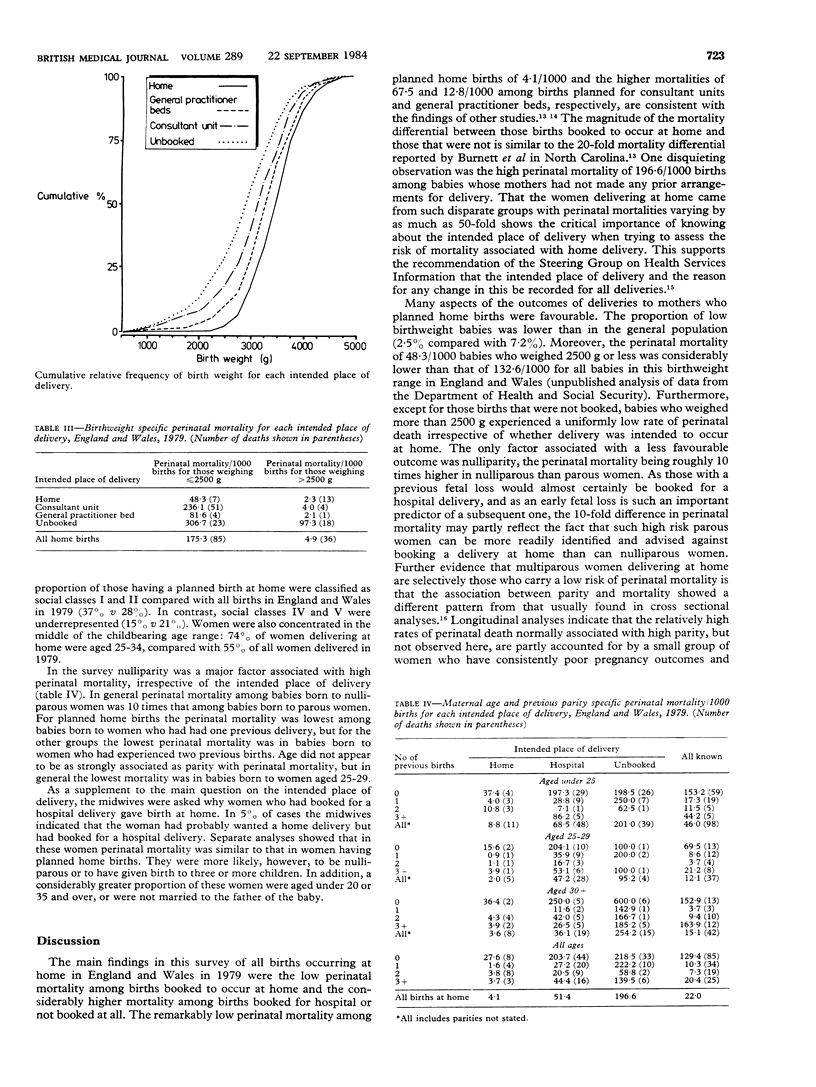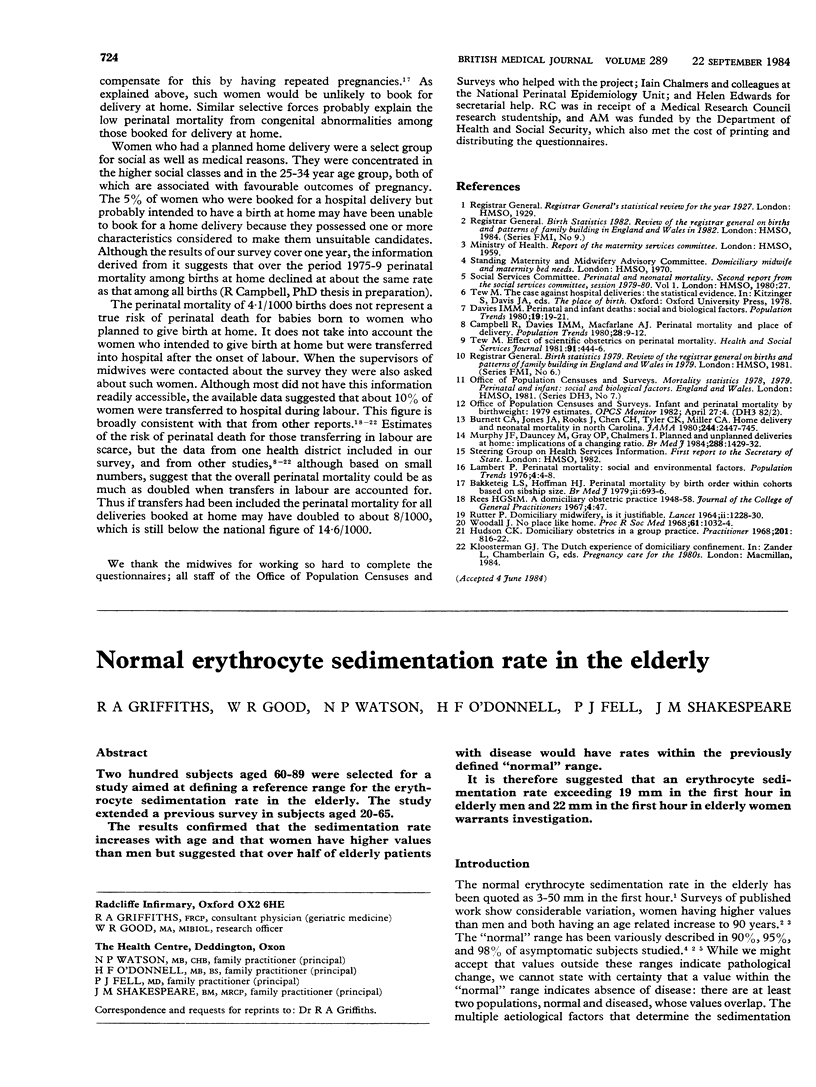Abstract
A survey was carried out of all 8856 births occurring at home in England and Wales in 1979. Of these births, 67% had been booked for delivery at home, 21% had been booked for delivery in hospital, 3% had not been booked, and for 9% the intended place of delivery was unknown. The perinatal mortality varied almost 50-fold according to the intended place of delivery, ranging from 4.1/1000 births in those booked for delivery at home to 196.6/1000 unbooked births. Deliveries that occurred at home but had been booked for a hospital consultant unit were associated with a perinatal mortality of 67.5/1000. Births that had been booked for delivery at home included the smallest proportion of babies of low birth weight: 2.5% weighed 2500 g or less compared with 18% of those booked for consultant units and 29% of those not booked. Within these low birthweight groups there were noticeable differences in perinatal mortality; births booked to occur at home had the lowest mortality and unbooked births had the highest. Perinatal mortality among babies who weighed more than 2500 g was generally low irrespective of the intended place of delivery; the only exception was in babies whose delivery had not been booked. In all groups perinatal mortality was considerably higher in nulliparous than parous women. Women booking a delivery at home are clearly a selected group, and some may have been transferred to hospital during labour and were thus not included in the survey. Nevertheless, these data suggest that the perinatal mortality among births booked to occur at home is low, especially for parous women.
Full text
PDF



Selected References
These references are in PubMed. This may not be the complete list of references from this article.
- Bakketeig L. S., Hoffman H. J. Perinatal mortality by birth order within cohorts based on sibship size. Br Med J. 1979 Sep 22;2(6192):693–696. doi: 10.1136/bmj.2.6192.693. [DOI] [PMC free article] [PubMed] [Google Scholar]
- Hudson C. K. Domiciliary obstetrics in a group practice. Practitioner. 1968 Nov;201(205):816–822. [PubMed] [Google Scholar]
- Murphy J. F., Dauncey M., Gray O. P., Chalmers I. Planned and unplanned deliveries at home: implications of a changing ratio. Br Med J (Clin Res Ed) 1984 May 12;288(6428):1429–1432. doi: 10.1136/bmj.288.6428.1429. [DOI] [PMC free article] [PubMed] [Google Scholar]
- REES H. G. A domiciliary obstetric practice 1948-58. J Coll Gen Pract. 1961 Feb;4:47–71. [PMC free article] [PubMed] [Google Scholar]
- RUTTER P. DOMICILIARY MIDWIFERY IS IT JUSTIFIABLE?A REVIEW OF OVER 1000 CASES IN GENERAL PRACTICE. Lancet. 1964 Dec 5;2(7371):1228–1230. doi: 10.1016/s0140-6736(64)91061-x. [DOI] [PubMed] [Google Scholar]
- Tew M. Effect of scientific obstetrics on perinatal mortality. Health Soc Serv J. 1981 Apr 17;91(4739):444–446. [PubMed] [Google Scholar]
- Woodall J. No place like home. Proc R Soc Med. 1968 Oct;61(10):1032–1034. [PMC free article] [PubMed] [Google Scholar]


